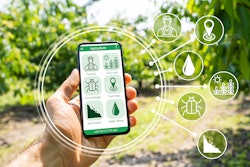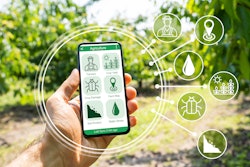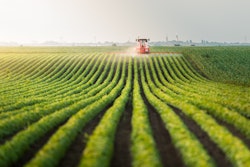
Globally, April was marked by unprecedented heat, surpassing all previous April temperatures on record. This trend of record-breaking temperatures extends over the past 11 months, reflecting a concerning pattern of warming with widespread impacts on communities, agricultural supply chains, and consumers.
In recent months, consumers have been feeling the climate change pressure in their wallets as prices of essential commodities, particularly beverages such as coffee, cocoa, and orange juice have soared to unprecedented levels. According to the International Coffee Organization, the wholesale price index for robusta beans surged by 17% in April alone, reaching $1.94 per pound, the highest level since 1979. The soaring prices are a direct result of prolonged heat waves in Vietnam, the world’s largest producer of robusta beans.
Similarly, cocoa prices hit a peak of $12,281 per ton in April, which was driven by a global cocoa shortage exacerbated by climate change-induced drought in West Africa, the center of cocoa production. For orange juice, prices in Europe have more than doubled from last year, exceeding $6,500 per ton in April. The increase, largely attributed to widespread citrus greening disease and climate change, is causing Brazil to anticipate a 15% decrease in the citrus harvest for the 2024/25 season and consumer prices to skyrocket. Some citrus-producing regions have recovered from adverse weather conditions, but it is insufficient to offset Brazil’s production shortfall.
Climate change and extreme weather inflate consumer prices by reducing the availability of essential commodities. Crop yields are extremely sensitive to both direct weather impacts, such as excess heat or water stress, and habitat changes, which foster the spread and development of new pests and diseases. Combined, these issues are creating unprecedented challenges.
Extreme weather hinders yield growth
Climate change poses significant risk to crop yield quantity and quality – from extreme heat to severe rain, various weather patterns can throw off crop supply and subsequently increase pricing. Crops cultivated in open-air environments are particularly vulnerable, relying heavily on specific weather conditions for optimal growth and productivity. When faced with major weather disruptions, such as prolonged droughts or severe storms, crops can suffer irreparable damage, disrupting millions of years of evolutionary adaptations aimed at survival.
As a result, both plants and farmers endure the consequences, experiencing reduced harvest volumes and compromised quality, leading to higher commodity prices. According to a NASA study, climate change may cause the production of maize (corn) to decrease by 24% by as early as 2030 under a scenario of high greenhouse gas emissions.
Climate change alters habitats compounding weather events
Weather changes have a profound impact beyond just the crops themselves; they influence the entire ecosystem that either fosters growth or harms harvests. When the weather shifts, it doesn't just affect plant growth, it also impacts pests, diseases, and weeds. For instance, warmer winters in temperate regions can keep insects active when they would typically be dormant, potentially leading to increased pest pressure. Likewise, prolonged droughts can stress plants, making them more susceptible to diseases that might not have been significant threats under normal conditions. These collective changes expose crops to new and sometimes unexpected risks, such as the spread of coffee leaf rust, emphasizing the interconnectedness of weather, agriculture, and ecosystem health.
Coffee leaf rust (CLR), caused by the biotrophic fungus Hemileia vastatrix, is a significant threat to Arabica coffee production, resulting in annual losses exceeding $1 billion. Arabica coffee, the largest species of coffee cultivated globally, has been declared as endangered by the IUCN due to threats posed by CLR amongst others. In recent years, the epidemic resurgence of CLR, dubbed "the big rust," has profoundly impacted countries across Latin America and the Caribbean due to changing weather patterns. In cooler temperatures, fungal spore germination under the leaf stops and the spores die off, so coffee plants at higher elevations above 1,000 meters, have previously been unaffected. However, with the overall rise in temperatures, spores can now successfully complete their germination process even at higher elevations, up to 1,400-1,500 meters.
Too much rain or too little rain can also be a factor. Spore germination requires prolonged wetness, meaning the leaf must remain covered with water droplets for many hours, which indeed happens. Once the disease takes hold of the coffee leaves, however, prolongued droughts can be equally challenging. A prolonged drought season affects plants weakened by the disease more severely than healthy ones.
While there is limited data so far, and scientists are reluctant to directly associate agronomic trends with climate change, the resurgence of CLR is considered an indication that more favorable weather conditions and changing climate patterns are contributing to its increased spread.
Food and beverage companies can’t control the weather, but can mitigate impacts
To successfully navigate extreme climate change disruptions and mitigate further price hikes, food and beverage companies must:
1. Strengthen partnerships with farmers and suppliers. By fostering closer relationships with farmers and suppliers and improving transparency in complex supply chains, food and beverage companies can build a stronger infrastructure to tackle climate change issues. Direct involvement in agronomic processes allows for better cultivation practices. For instance, corporate agronomists can share best practices to tackle climate-related issues more effectively. Additionally, food and beverage companies have access to advanced technologies, such as data analytics tools, which help optimize farming practices. They can also offer financial and logistical support, including funding for infrastructure improvements and providing essential training programs for farmers.
2. Embrace regenerative agriculture. Investing in regenerative practices enhances raw material security and promotes eco-friendly farming methods. These practices include crop rotation, cover cropping, and agroforestry, which minimize environmental impact and maintain soil health. Advanced technologies aid in tracking progress and ensuring program success.
3. Harness technology to increase supply chain visibility. Innovative technologies can enhance how organizations monitor and manage climate change impacts. This includes satellite data for weather forecasting, data analysis and mobile apps to facilitate upstream relationships. With better visibility and the ability to accurately track field conditions, risks can be managed more effectively, yields can be optimized, and resource use can be minimized. Additionally, traceability technologies enable transparency in supply chains, ensuring adherence to sustainable practices. The ability to trace specific batches, along with detailed records of agronomic practices such as chemical use and irrigation, allows for the development of best practices to improve future yields.
A collaborative and technology-driven approach strengthens the resilience of agricultural yields, paving the way for a more stable and sustainable food supply for food and beverage companies. Together, through innovative practices and strategic partnerships, food and beverage companies, and their growers, can more effectively navigate the challenges of a changing climate, ensuring a brighter, more secure and affordable future for agriculture and food production.


















